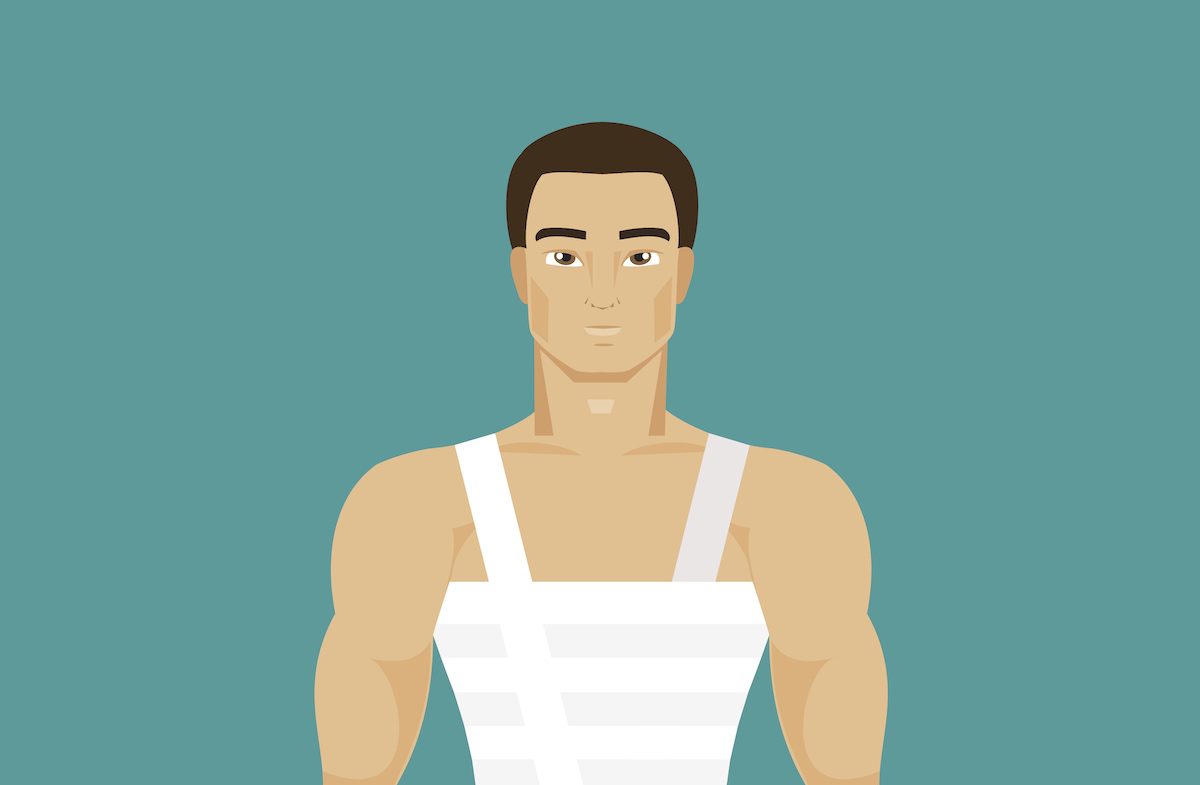 (Illustration: artbesouro/Getty Images)
(Illustration: artbesouro/Getty Images)
Up to almost 70% of boys in early puberty develop gynecomastia, according to the NIH. However unless you have it, you probably haven’t even heard of it. That’s because it’s something most boys are ashamed to even talk about or admit to having. Adult ISH co-host Nygel Turner has lived with the condition and chronicles his experience.
When I was a kid, my auntie Tanya always said that whenever she pulled up at the house, she could count on seeing little me out on the front lawn, naked and watering the grass. “There’s my naked baby,” is what she yells out to me to this day. But that all changed when I was 12. One day, I’m taking off my shirt to hop in the shower, when I notice a small lump behind my left nipple. It’s the size of a captain crunch berry and it’s hard as a rock. I give it a quick squeeze and I immediately burst into tears.
My mom immediately takes me to the doctor, who says, “For starters, take a sigh of relief because it’s not cancer.”
I’m holding my breath.
“It’s a common condition called gynecomastia. It should go away by the age of 22.”
Twenty-two!? I thought to myself, “I’m gonna be old and married with kids by then!” But what the doctor doesn’t mention was that the lump would also duplicate itself behind my right nippleand that the lumps were going to become the size of golf balls. And I would look like I was growing breasts. So I began wearing baggy shirts with huge logos on the front so you couldn’t see the shape of my chest. Before leaving home, I always tore a long silver strip of duct tape and wrapped it around my entire chest and back like a sports bra. Even then, I always felt like people just knew. I confided in my dad and older brother. At first, they were actually concerned, but once they hear that it will eventually go away, the condition becomes a running joke.
“Come on titty man! Run faster, titty man!”
At first I laughed with them, but after a while it gets old, and tears my self-confidence to pieces.
I finally decided to do something about it. First, over many months, I tried to massage the lumps into smaller pieces, but that doesn’t work. Then I started working out six days a week. Eventually, I’m in the best shape of my life and the lumps are actually less noticeable, but I still hate my body. So as a last resort, I go to my dad’s toolbox and take out the heavy duty pliers. I carefully position the jaw around the hard tissue and squeeze the pliers as hard as I can. Once I wipe my tears, I check my chest. The lumps are still intact. I give up.
I realize: This is how it is going to be until I’m 22.
I get comfortable never going swimming anymore even though I love to swim. I become that “cool kid” at the pool parties who just shows up with his best fit, like I’m too good to be splashing around in a pool. In high school, I’m on the basketball team, so when I have to change into my uniform I rush to the locker room early and change in the stall.
I build a whole persona around hiding my body and it works. But I start to fantasize about the future, how once I turn 22, the lumps will just pack up their bags and go. But when I finally turned 22, the age where I was finally supposed to start loving myself, the lumps are still there.
There is one more option. It’s something I never thought I would do. I had been saving up all my money for a Jeep Wrangler, but I wouldn’t be able to get that Jeep if I do this — plastic surgery. Plastic surgery seemed like it was for rich people. Rich white people, really. It’s something that felt taboo, but I really wanted my body to look like what I think a man’s body is “supposed” to look like. So, I took my $10,000 that I had saved up for the first time in my whole life, and instead of getting my dream Jeep Wrangler I drove an hour to the best plastic surgeon in Northern California.
After surgery, I wore a compression recovery vest for a couple weeks. Then finally the day arrived. I nervously walk to the bathroom and lock the door. I take off my vest and peel off the bandages around my chest. Then I finally take a look. I feel amazing and I finally love my body. I finally feel whole.
I started working out again, taking shirtless videos and putting them on my Snapchat for the first time in my life. But then I’m looking at a picture of myself, my happy self, and a new kind of self-hate starts to creep in. Why am I acting like this is some kind of accomplishment? I’m smart, I’m not a follower. But I was willing to spend $10,000 to change my body so that I would make more sense to myself when I look in the mirror…
A few months later, I get ready to go to a pool party at a friend’s house. I’m planning on taking off my shirt in front of everyone and jumping in. So I hop into my 2006 Honda Accord and roll out. Once I roll out of the driveway, the check engine light comes on. Again.
Sometimes I still wish I could have just gotten that Jeep.
Nygel Turner is co-host of YR Media’s podcast Adult ISH, distributed by PRX’s Radiotopia. This essay is adapted from an Adult ISH episode called Insecure ISH, and was also featured on WNYC’s Snap Judgment.